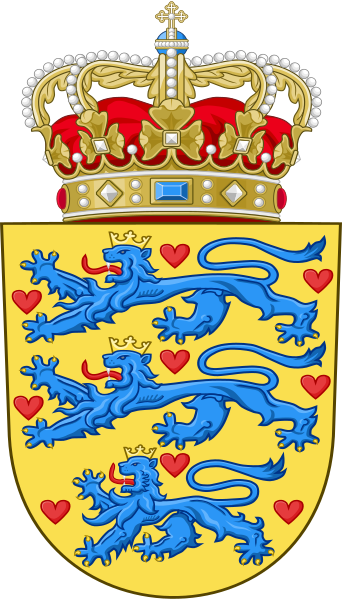This is the current Danish coat of arms. The only description of what the symbols mean was in the Holger Danske story which I posted the other day. According to Andersen, the three lions (which symbolize strength) stand for King Canute, King Valdemar, and Queen Margaret I. The hearts apparently stand for heroic Danes, although Andersen only mentions four of them. However, through history (as you can see in the example before) has varied over time. I don't know why they finally settled on nine hearts.
Cnut the Great was the Danish king who, in 1015, took over England (well before the Normans got around to taking it over). According to a Wikipedia quote of a very old history of the vikings:
"Knut was exceptionally tall and strong, and the handsomest of men, all except for his nose, that was thin, high-set, and rather hooked. He had a fair complexion none-the-less, and a fine, thick head of hair. His eyes were better than those of other men, both the handsomer and the keener of their sight."1There are several kings name Valdemar and there are two kings that could fit the qualifications of taking over Wends. Valdemar I was known as "Valdemar the Great" so I figured that he was a good candidate for being featured on the coat of arms but it turns out his son, Valdemar II was called "Valdemar the Victorious" and carried on his father's activities. Both of these first two Valdemars were also the subject of myths and
historical legend. Wikipedia includes these two pictures of famous events that occurred during their reigns.
 |
| This is Valdemar I, conquering the Wends and tearing down idols, under the supervision of Bishop Absalon, a famous Danish political and religious figure. |
 |
| Valdemar II's victory over the Estonians. Bishop Sunesen performs a Mosaic feat of arm-holding-up to ensure victory. |
.svg.png) |
| One of the older coats of arms, with lots more hearts, and with the lions facing forward. |

No comments:
Post a Comment